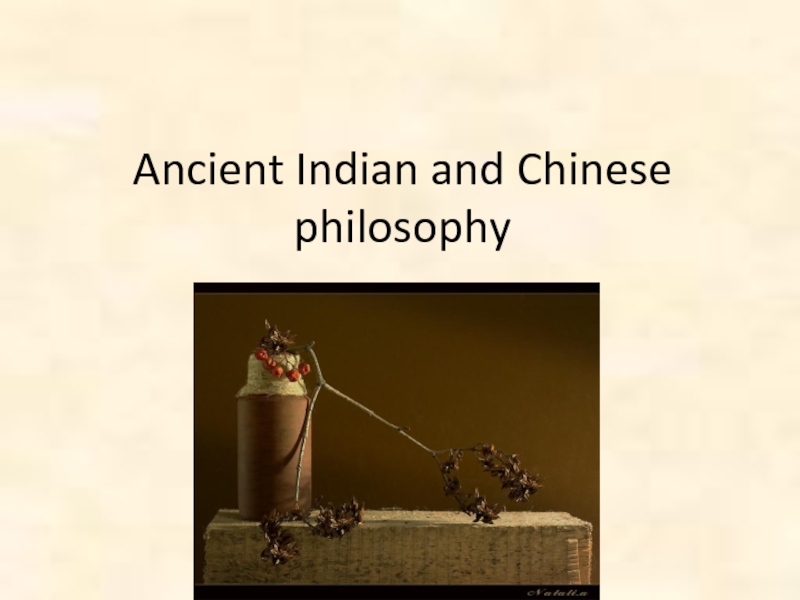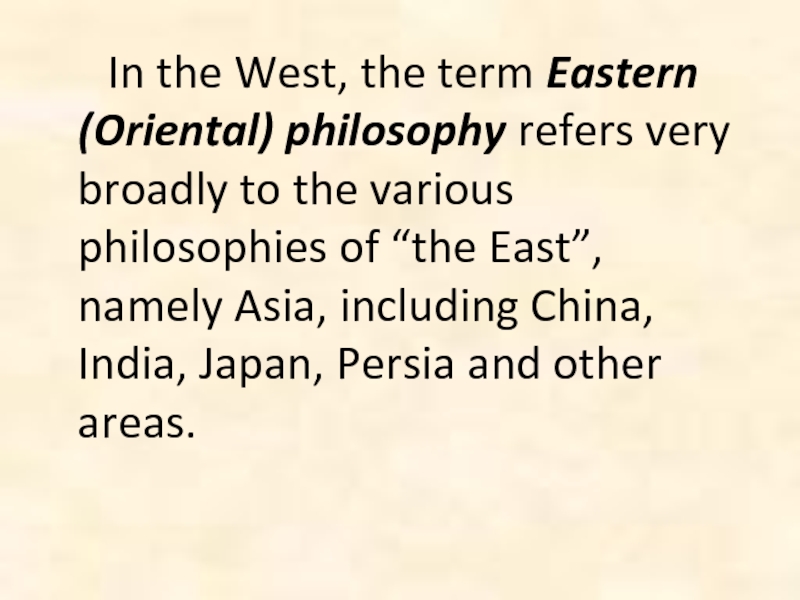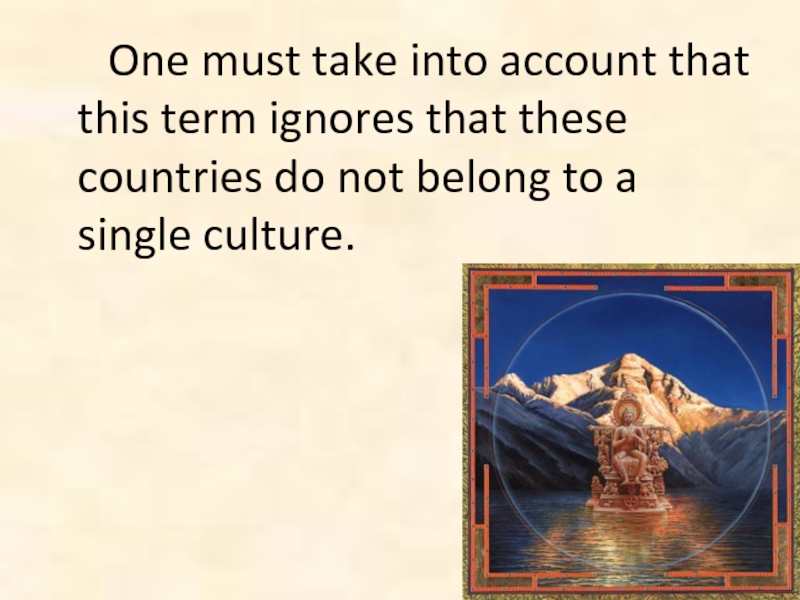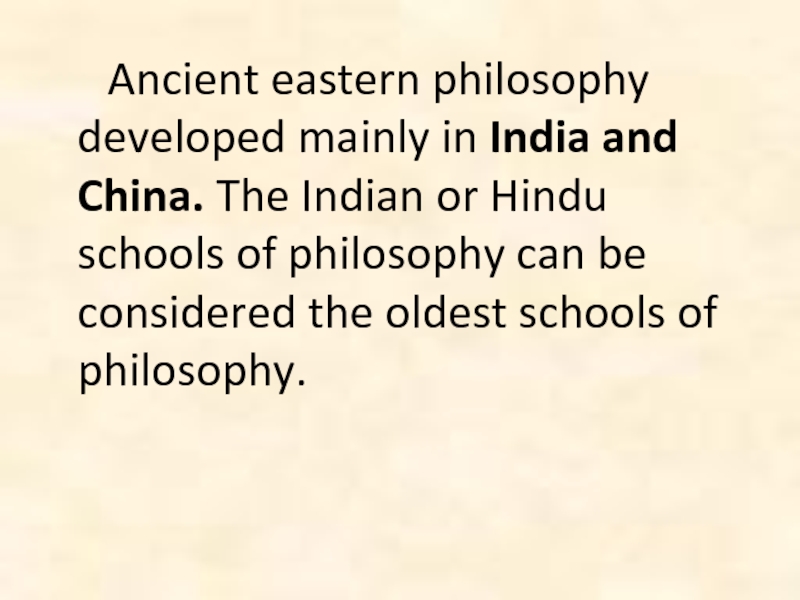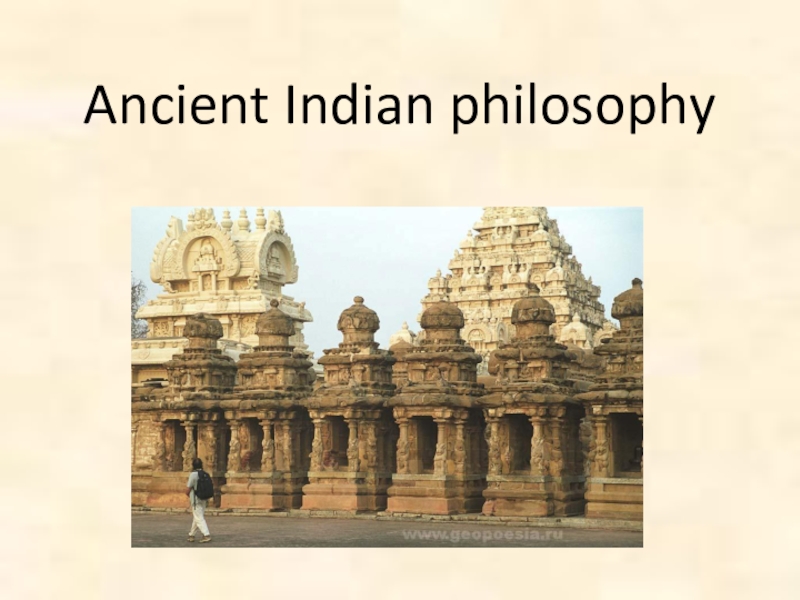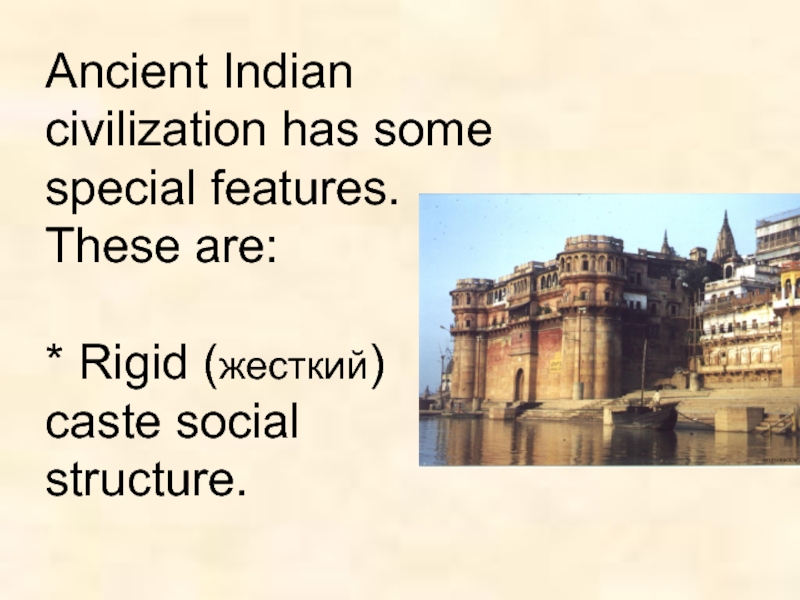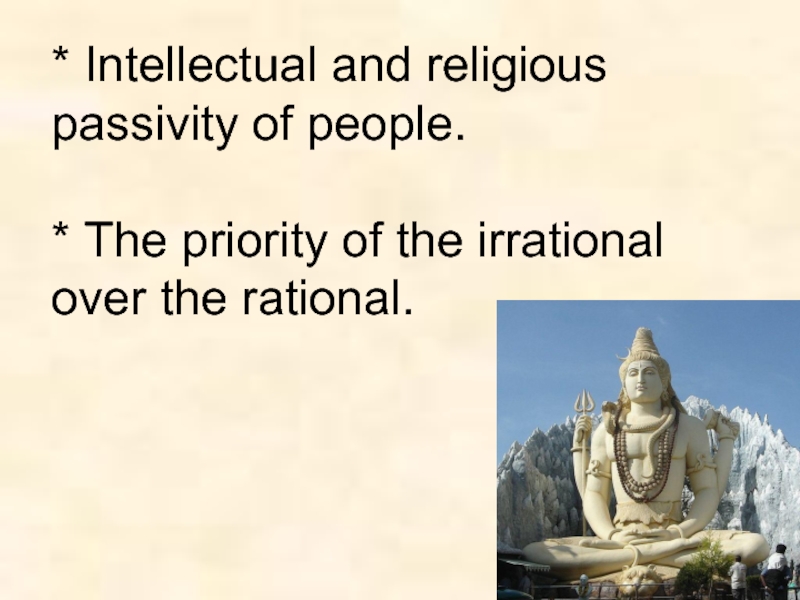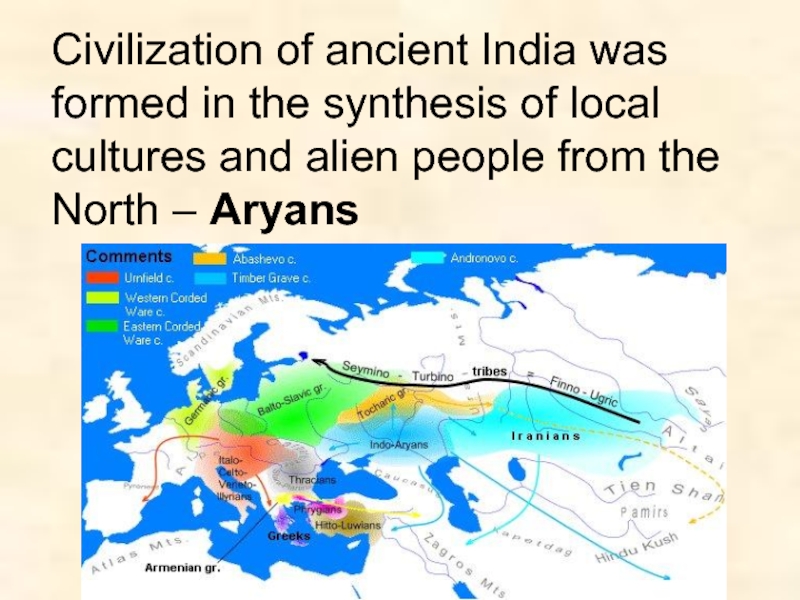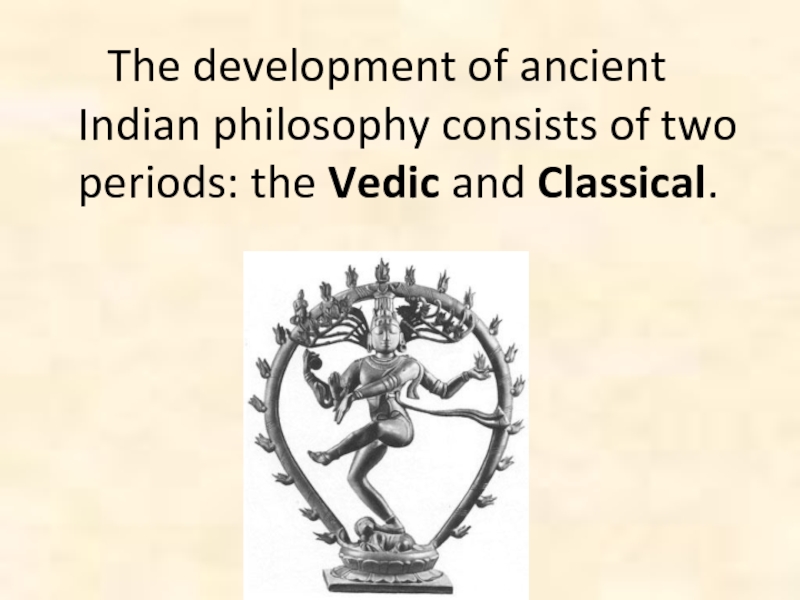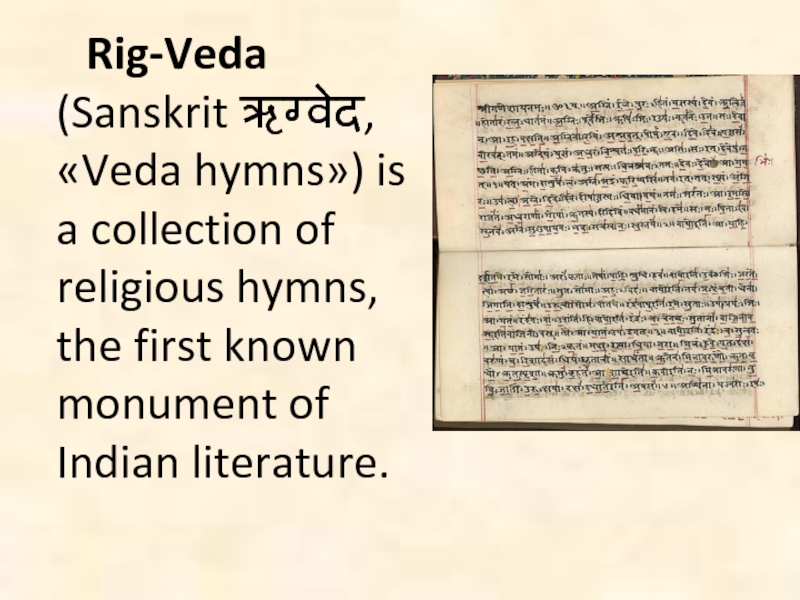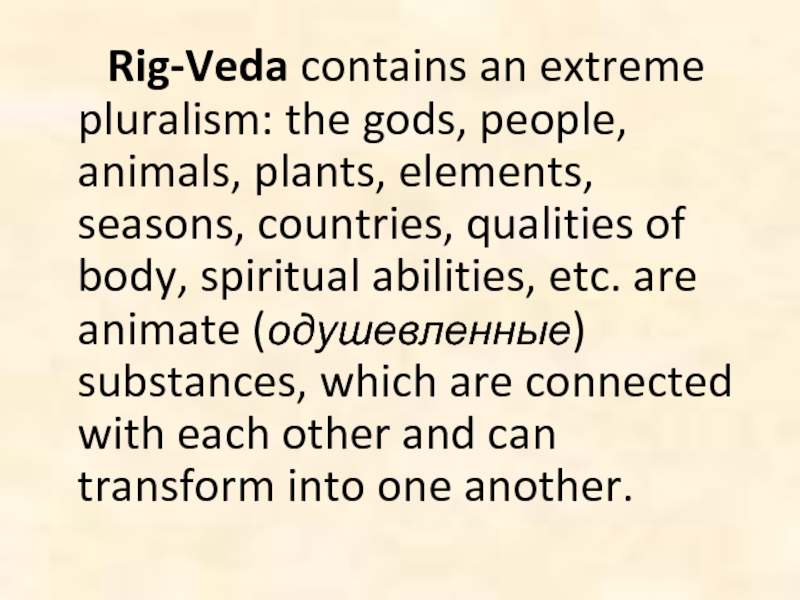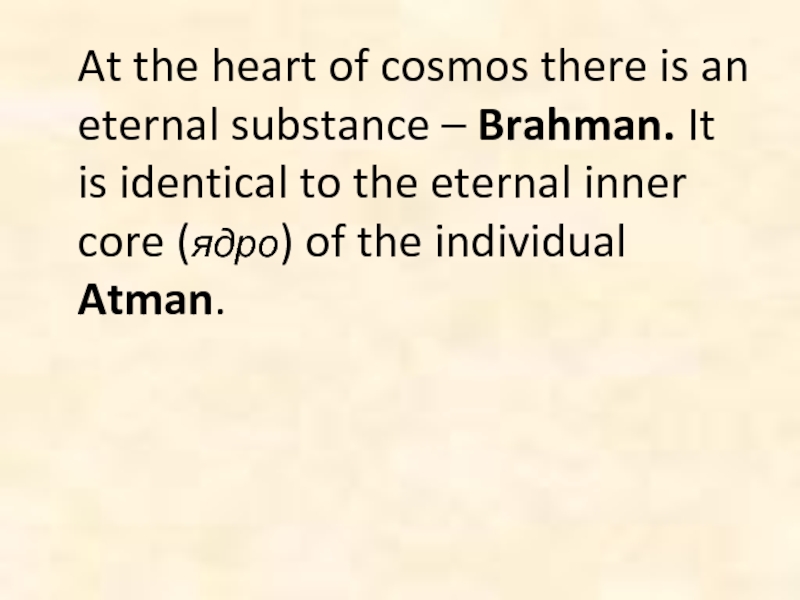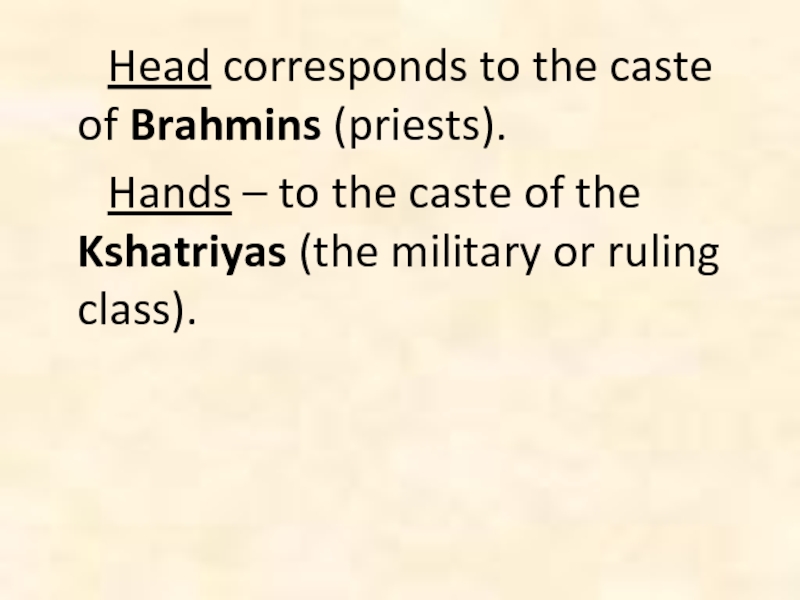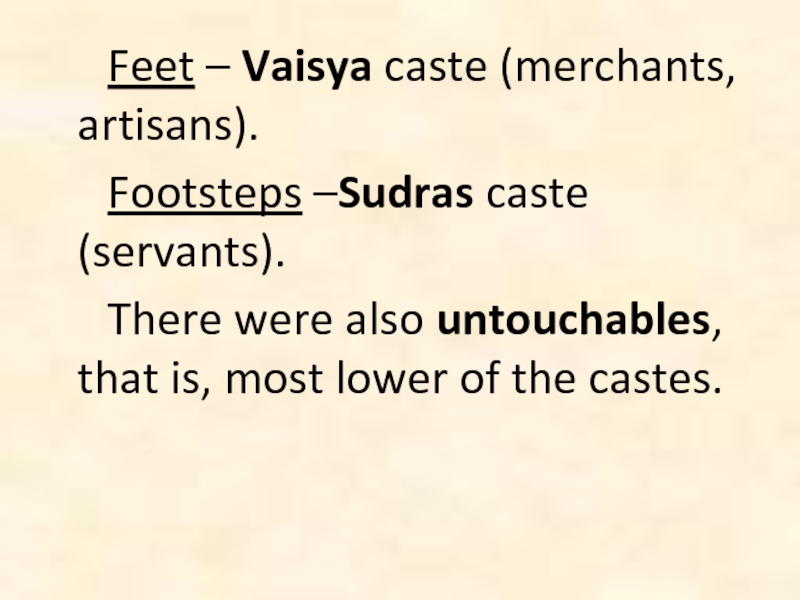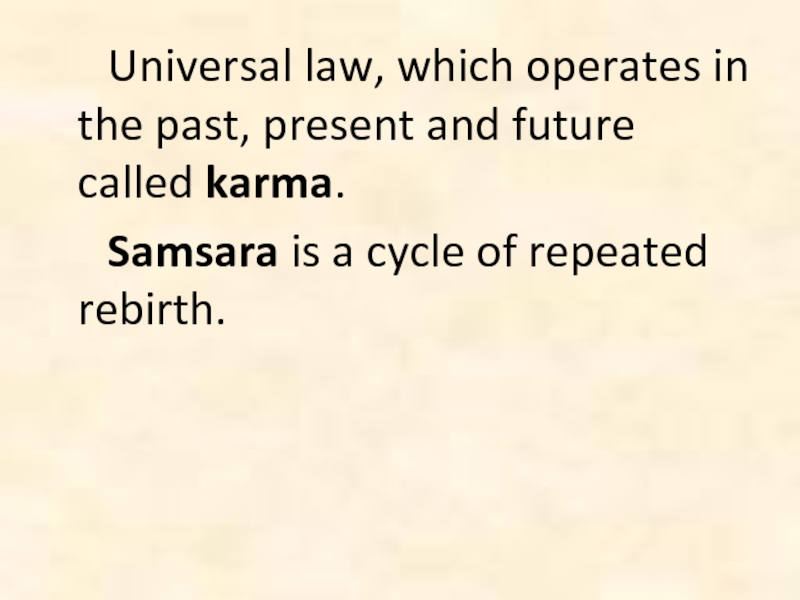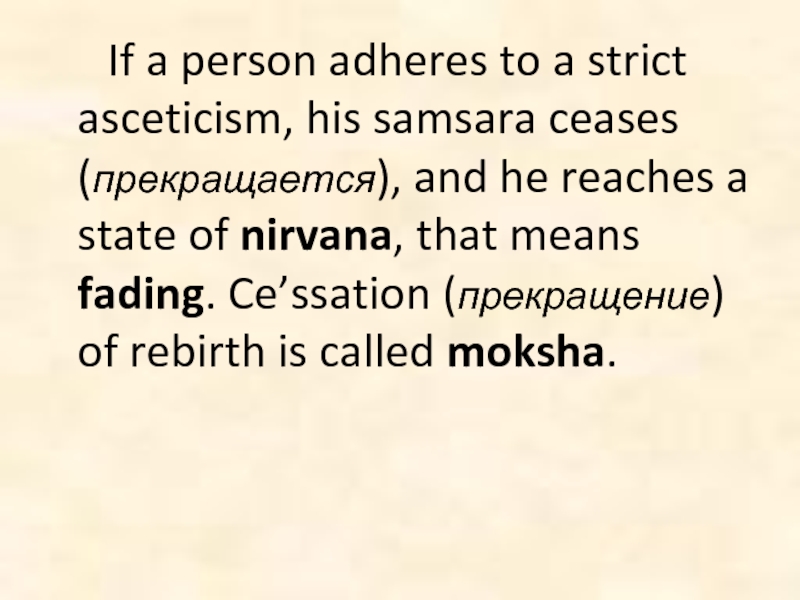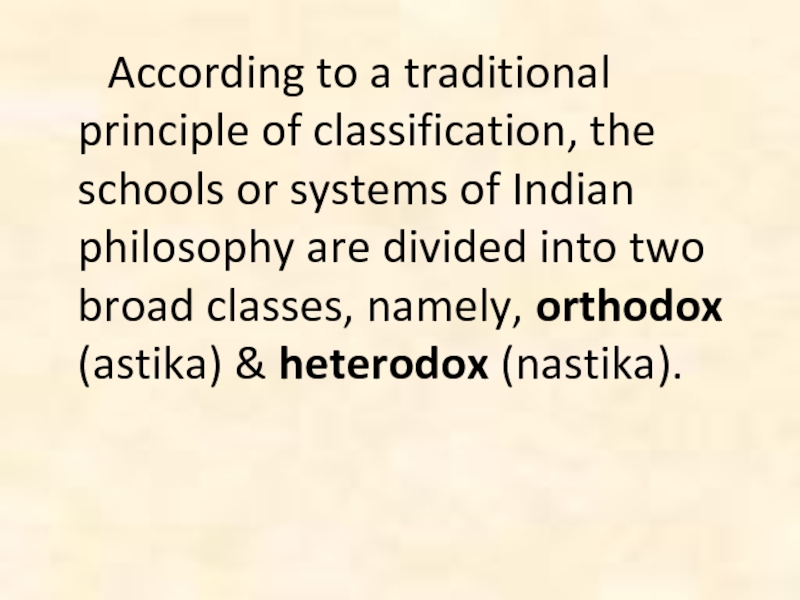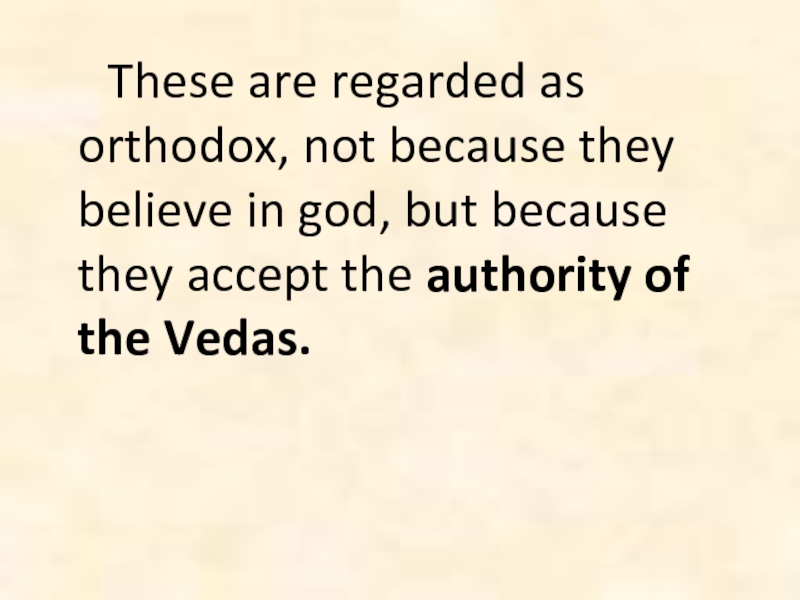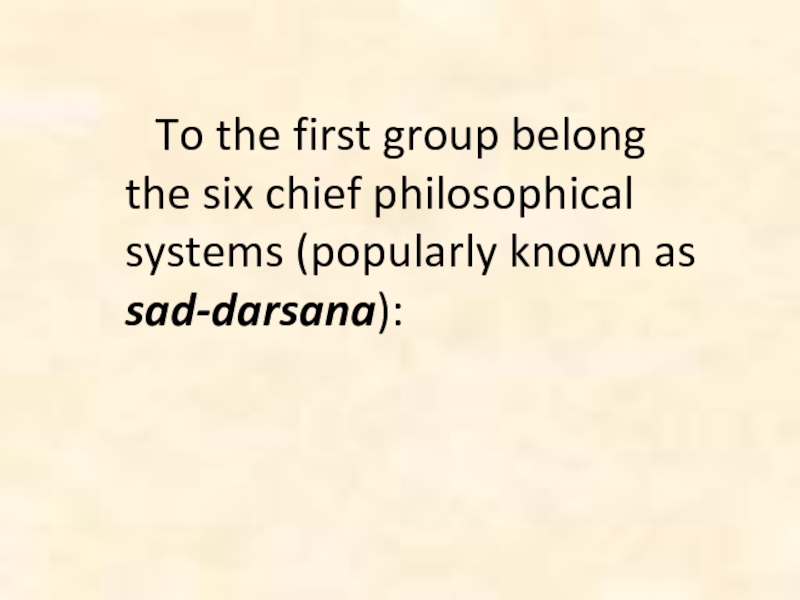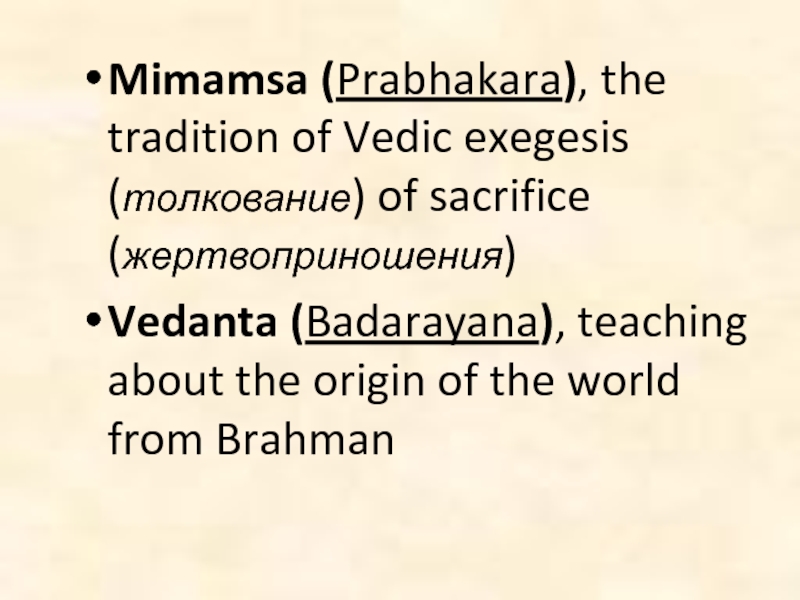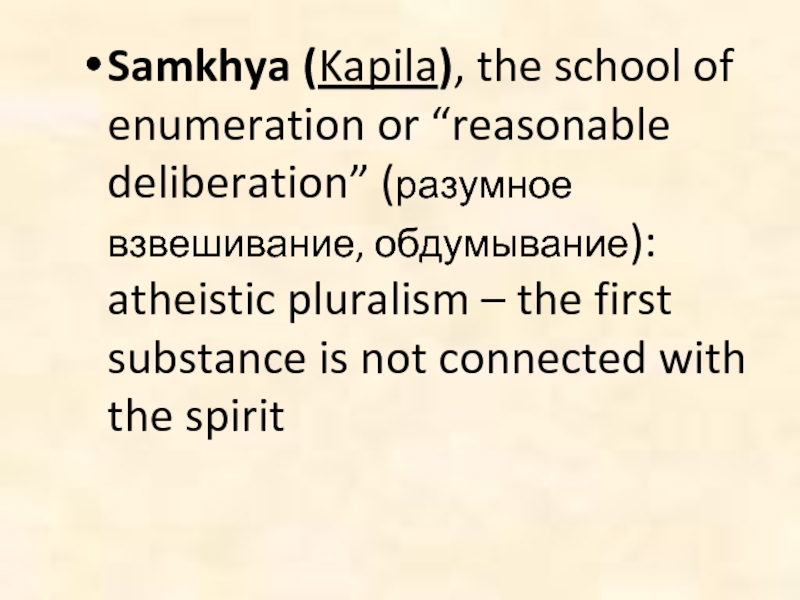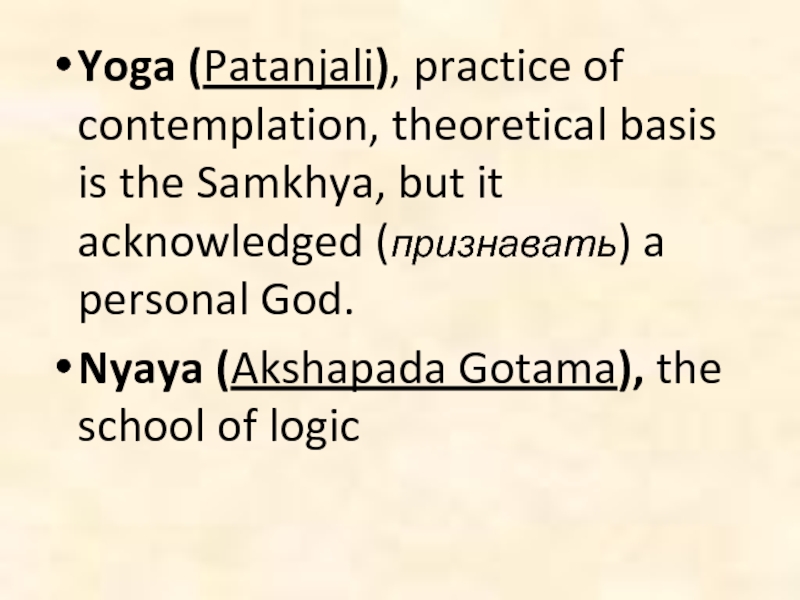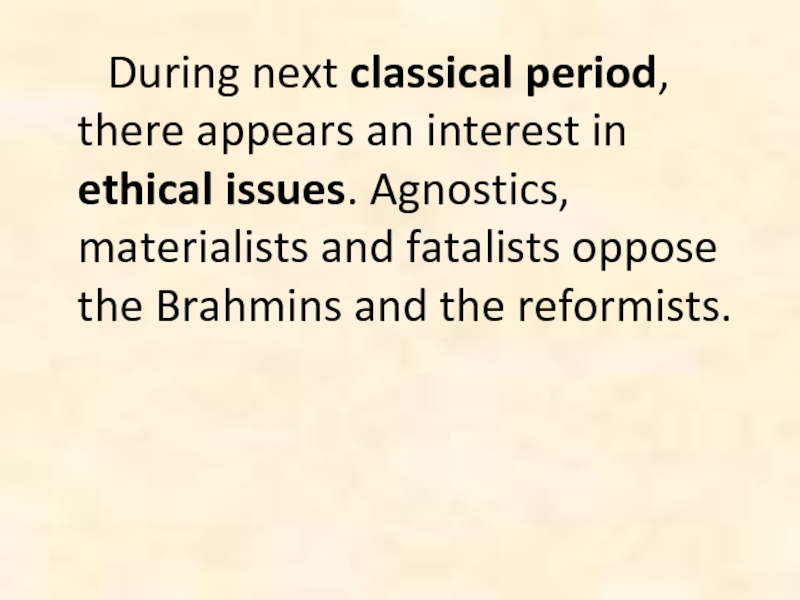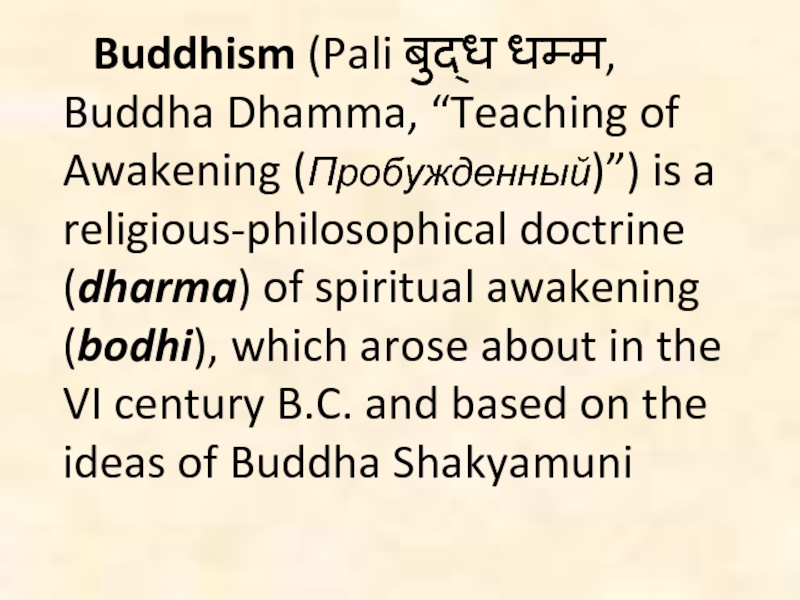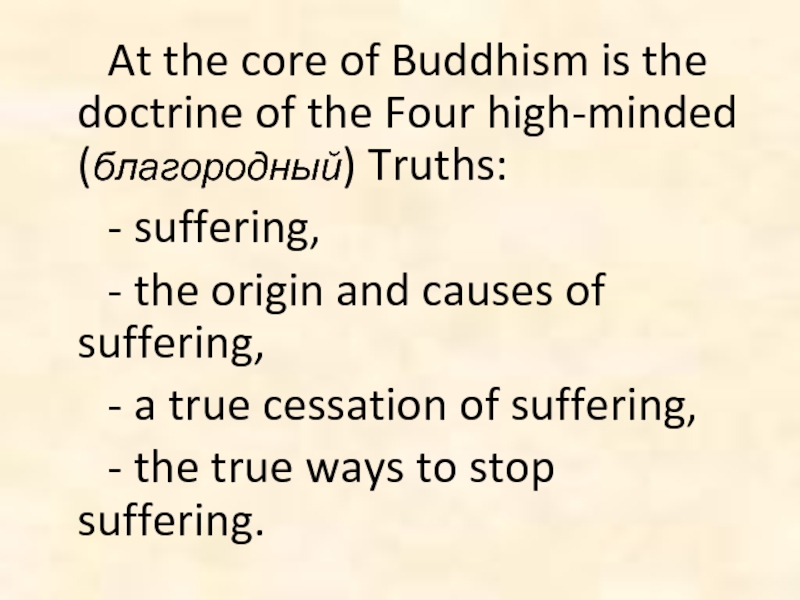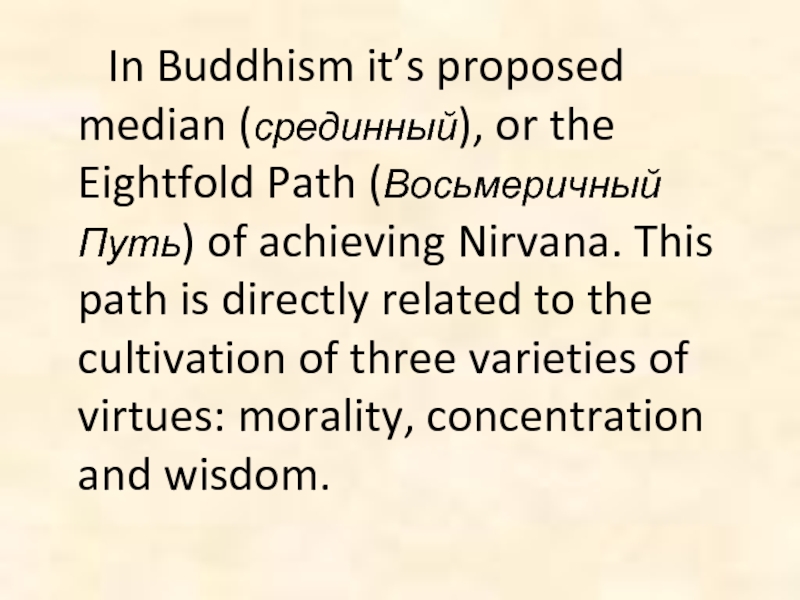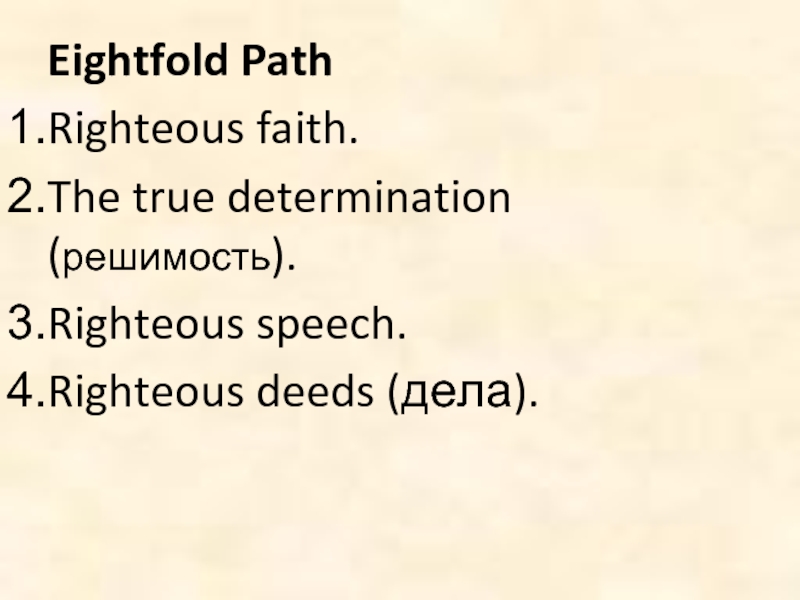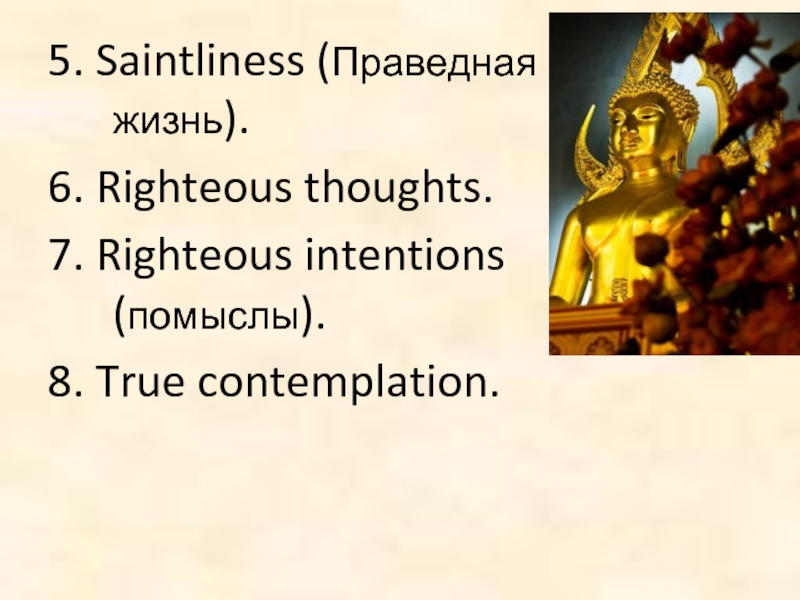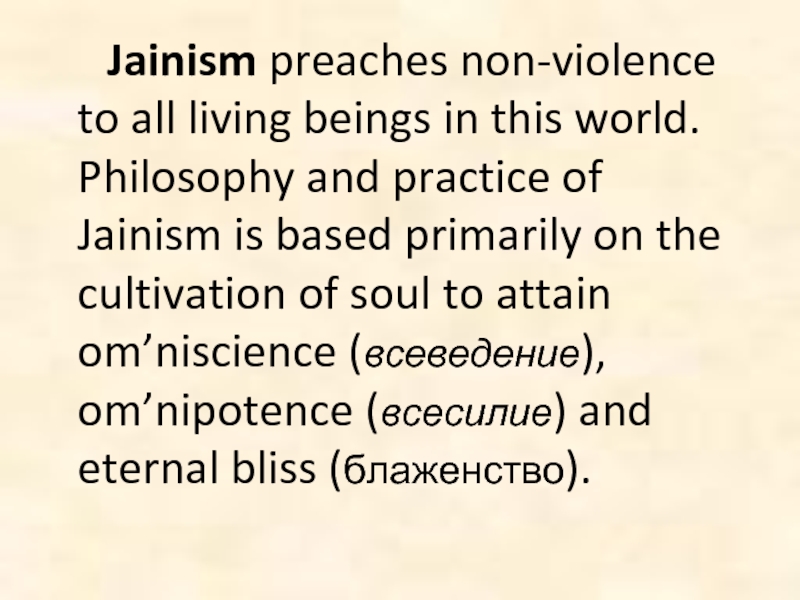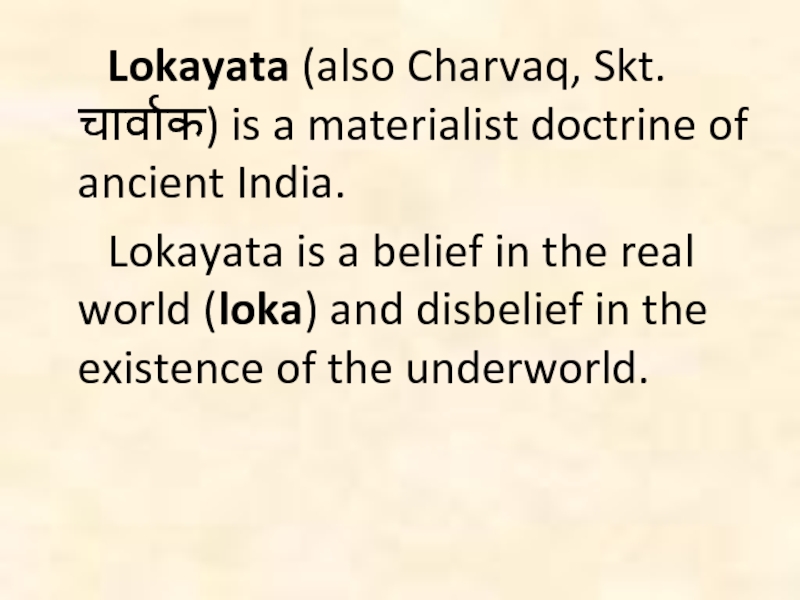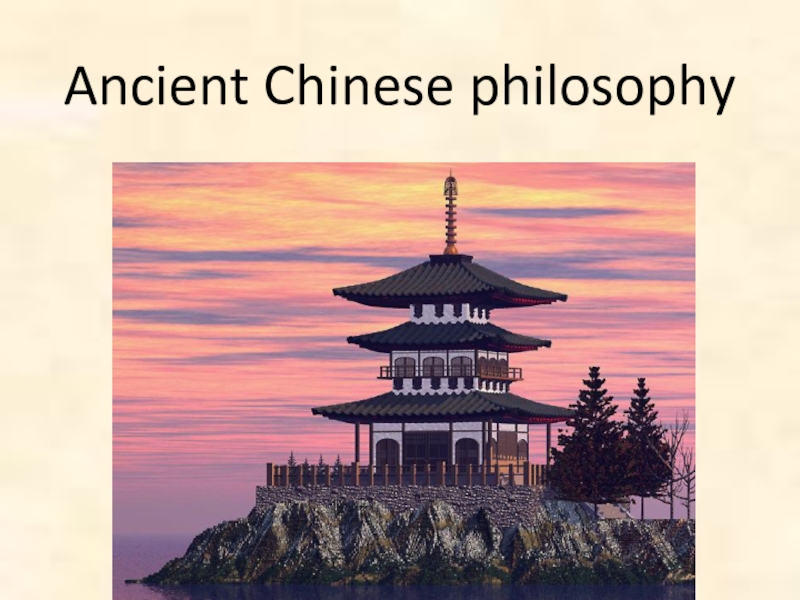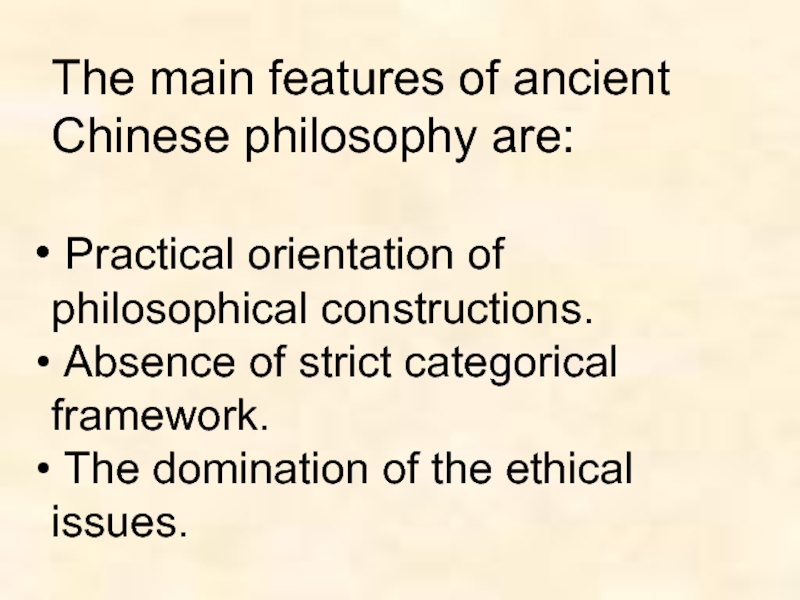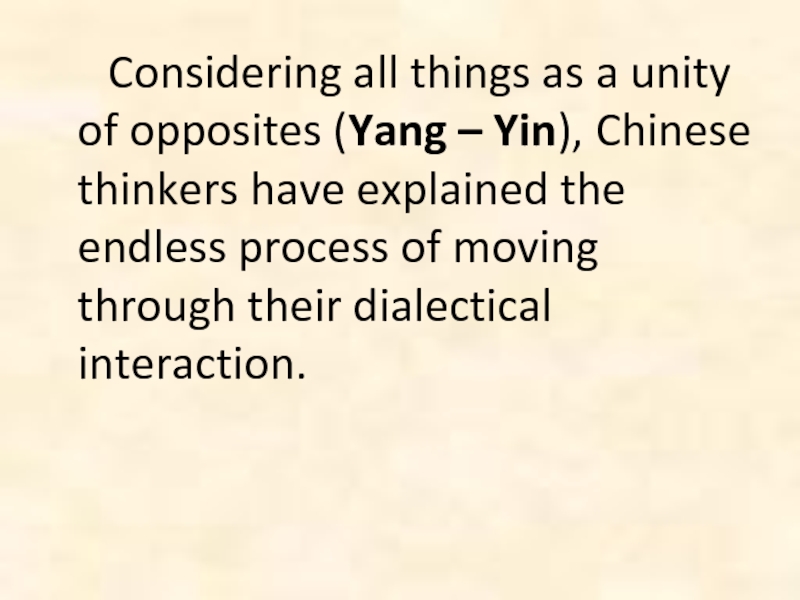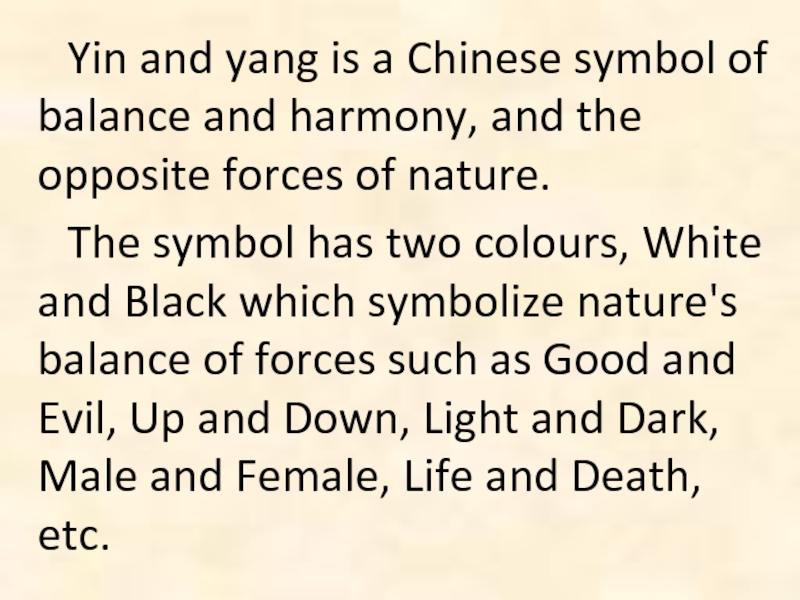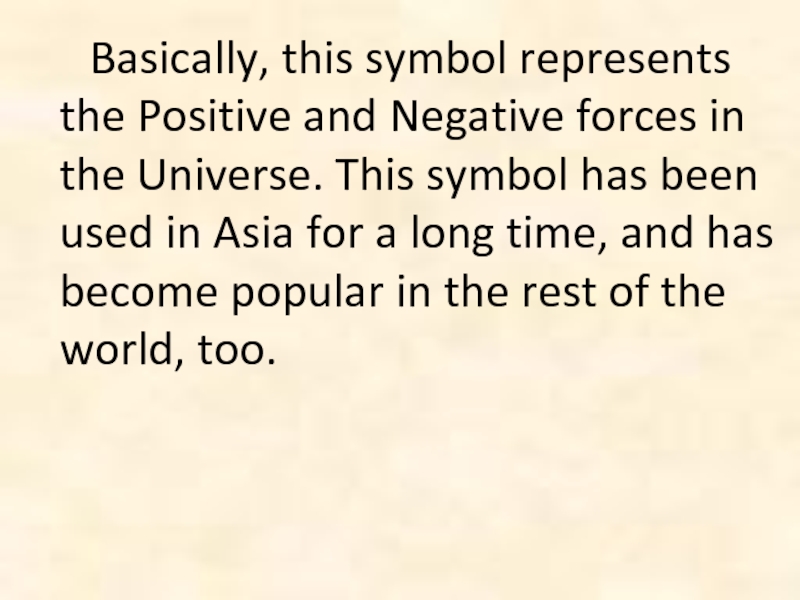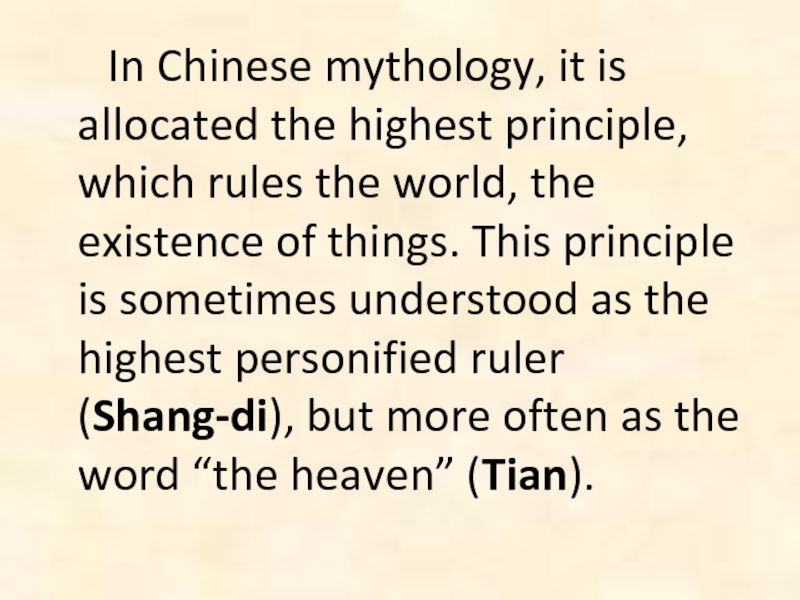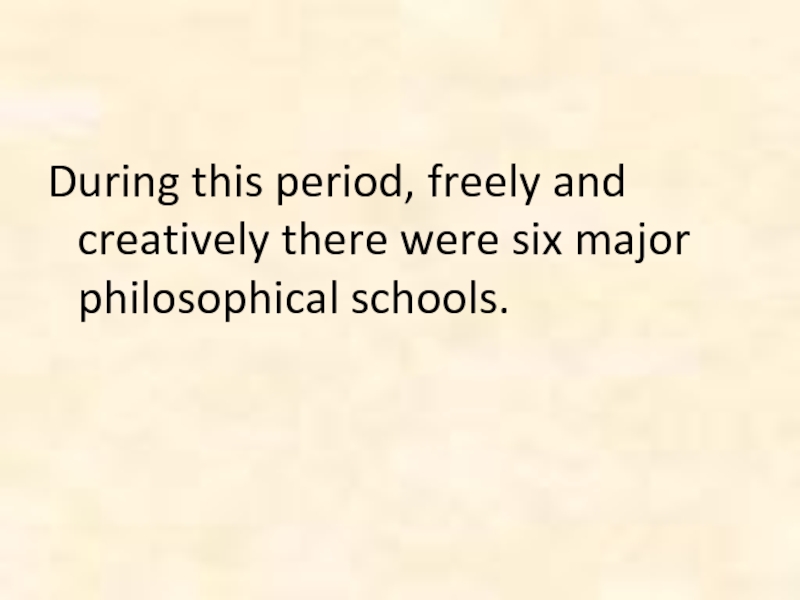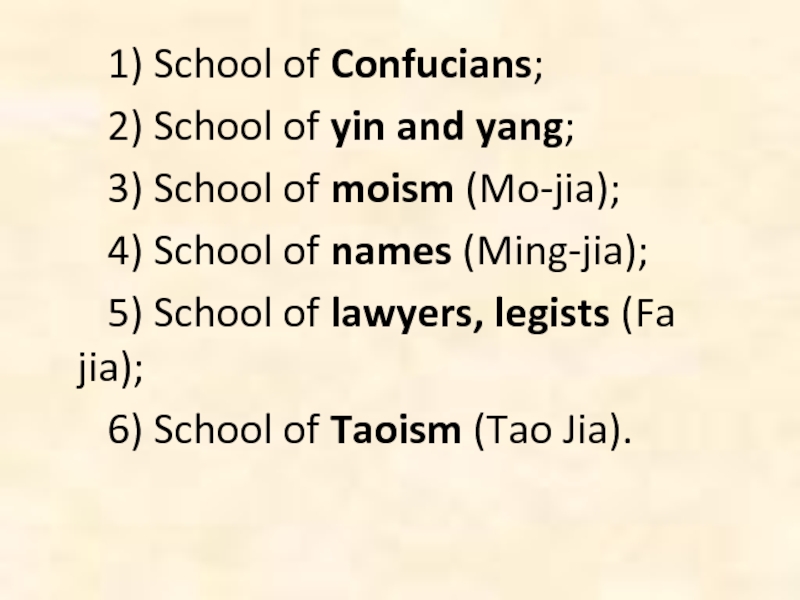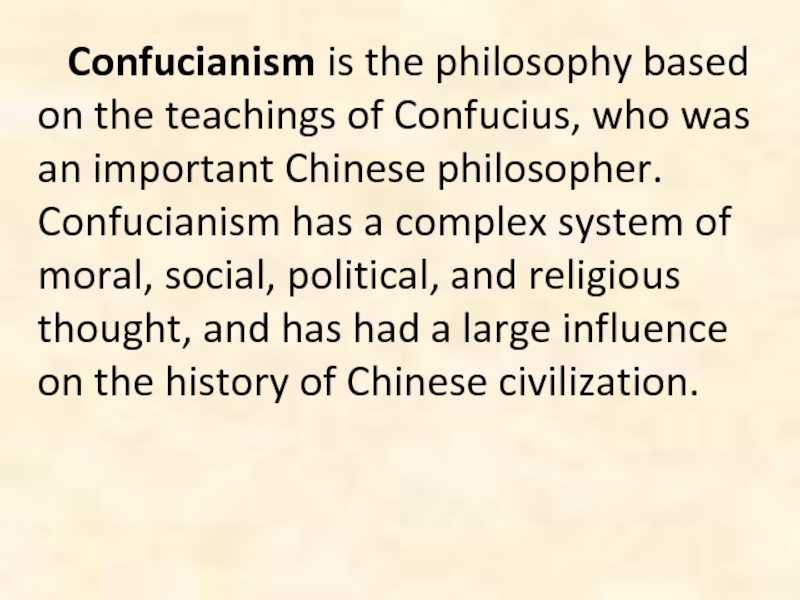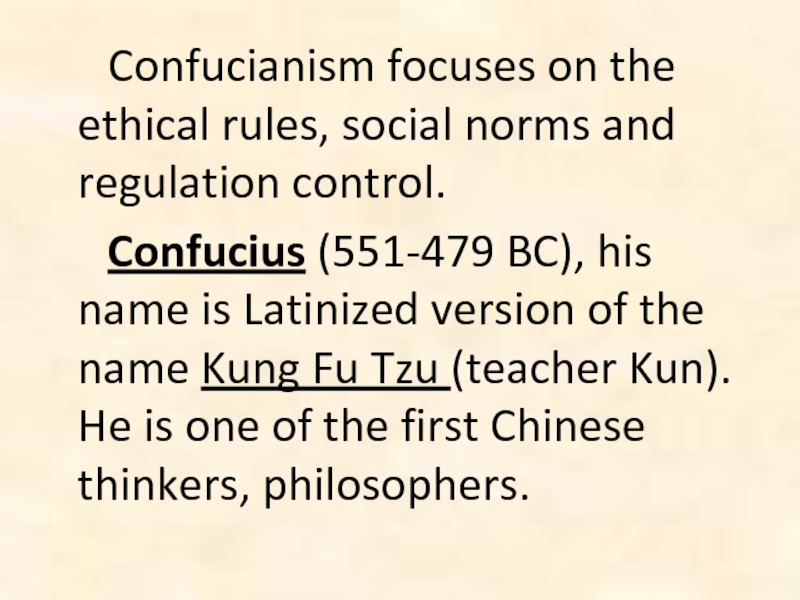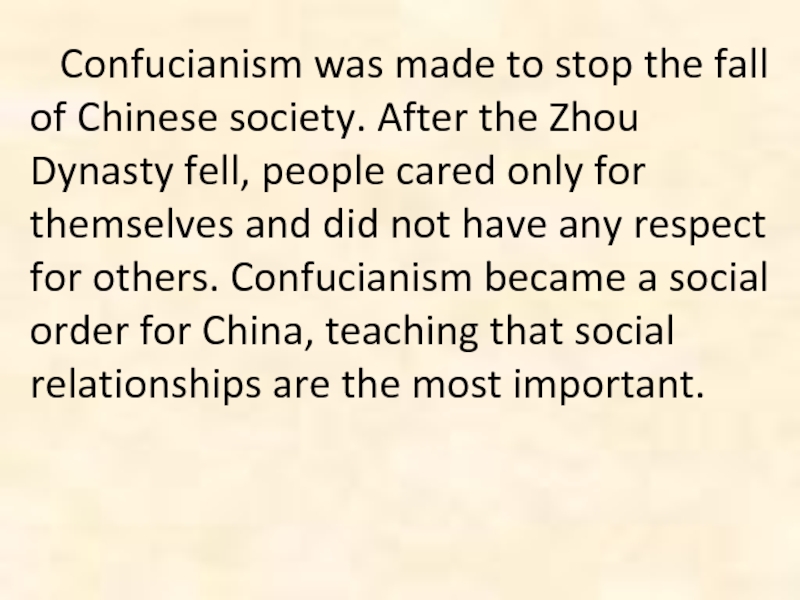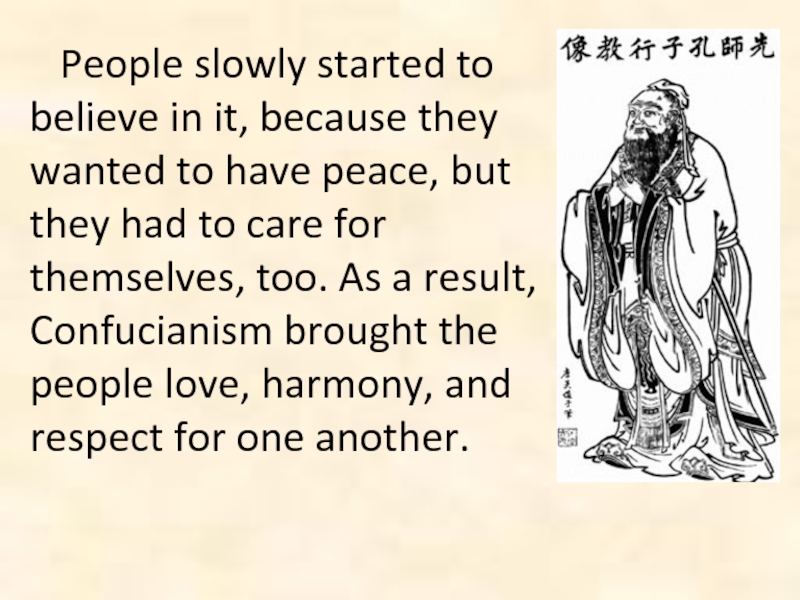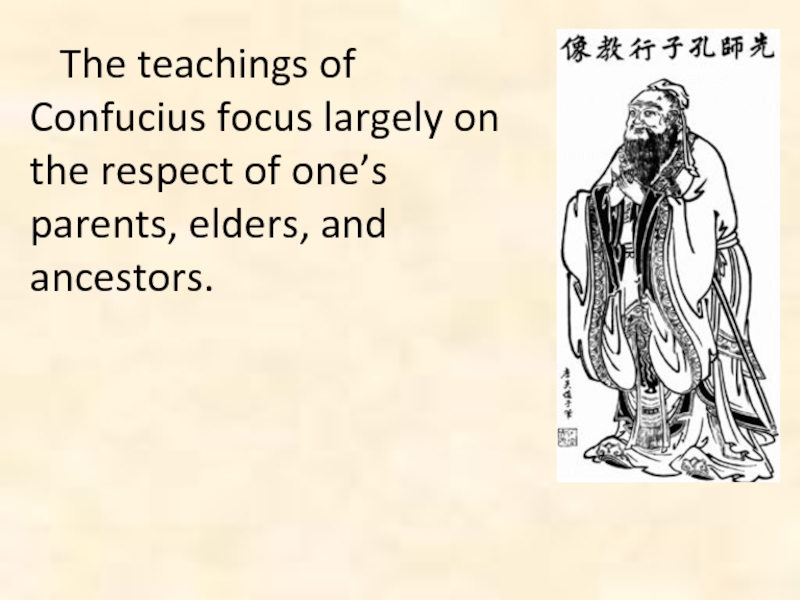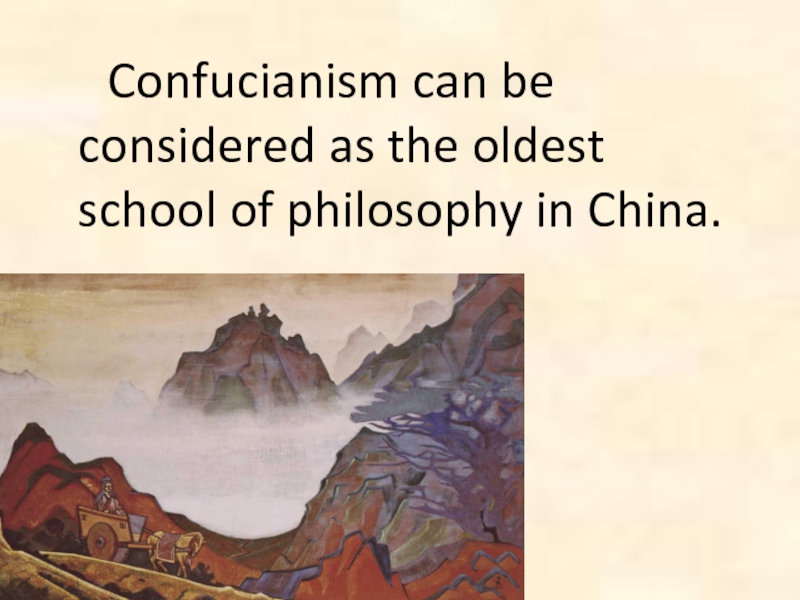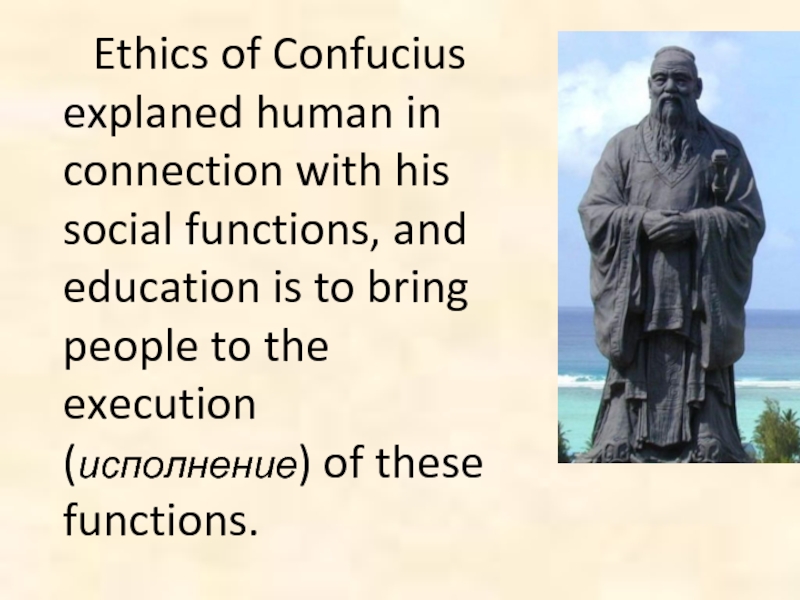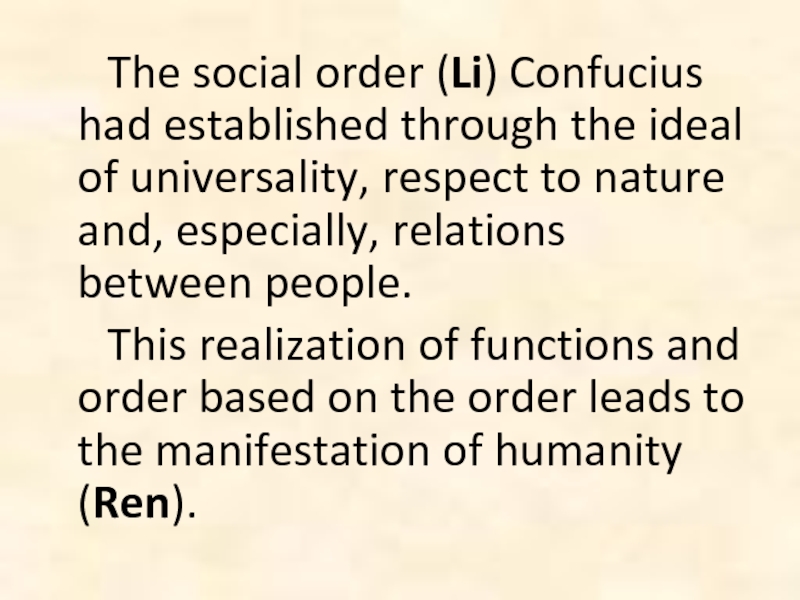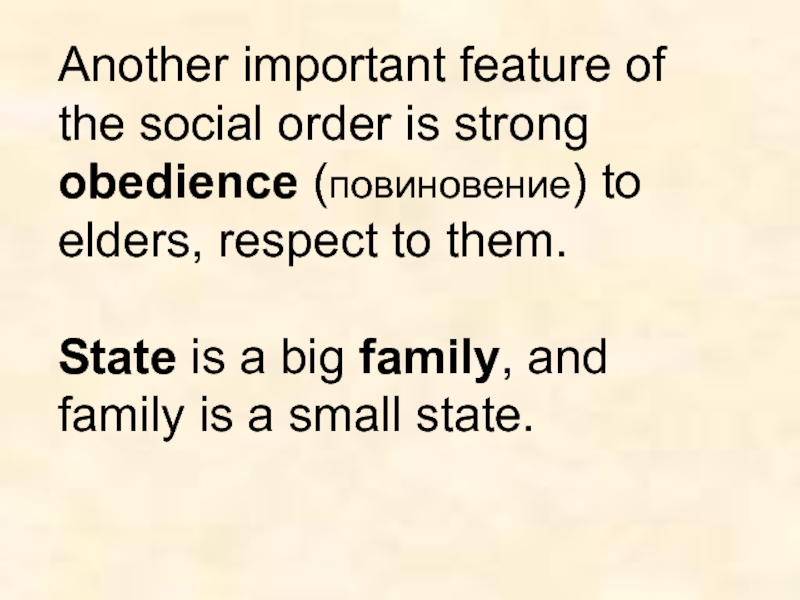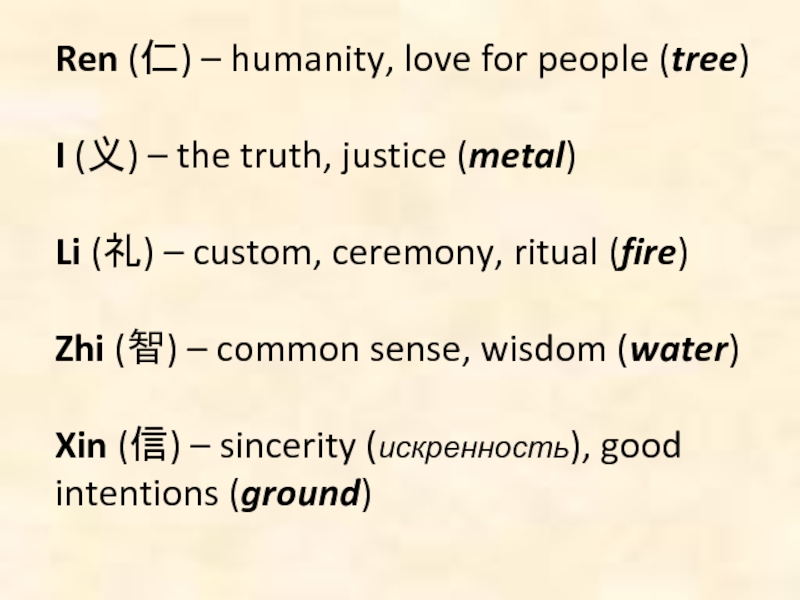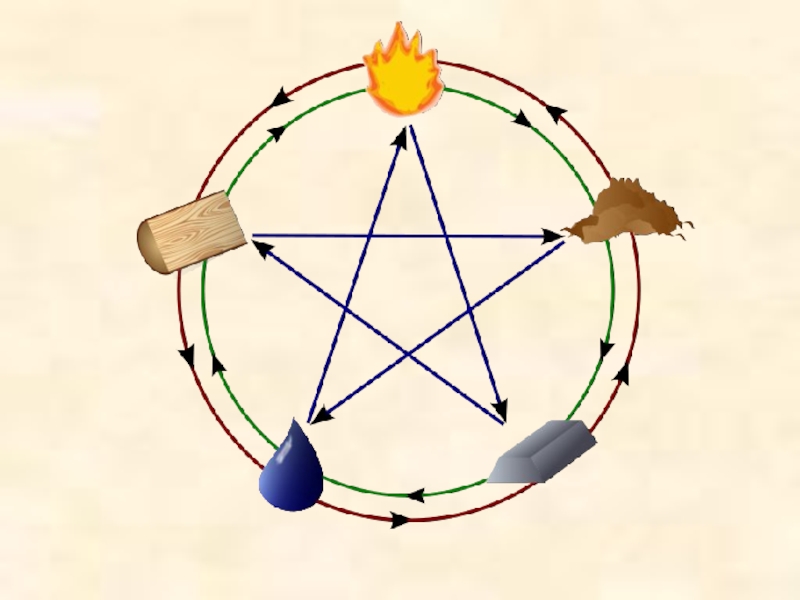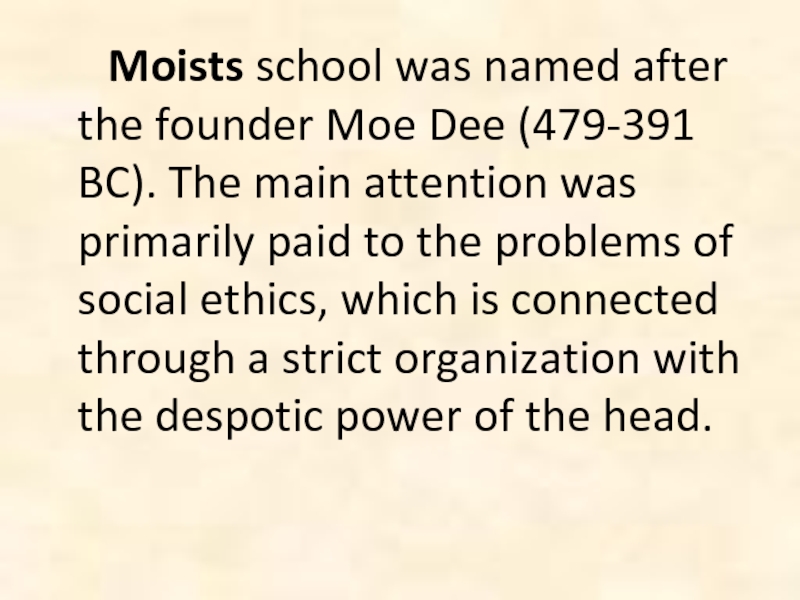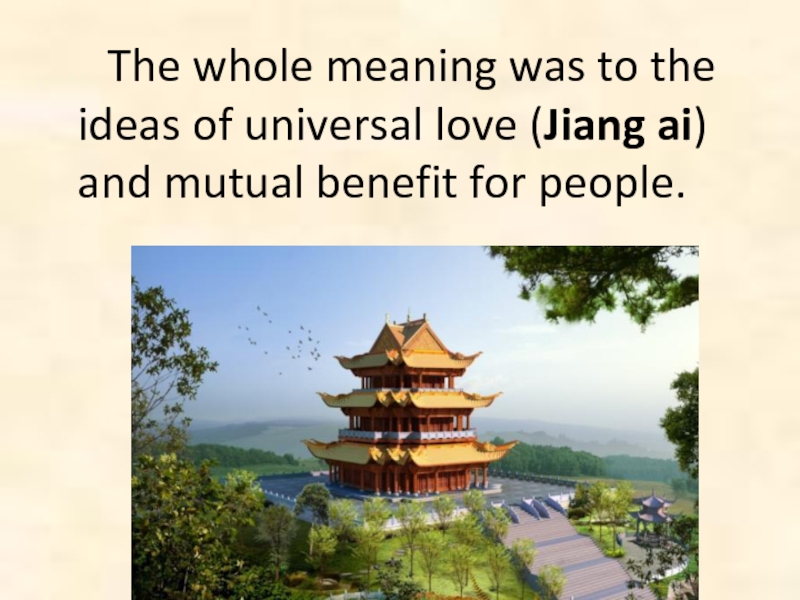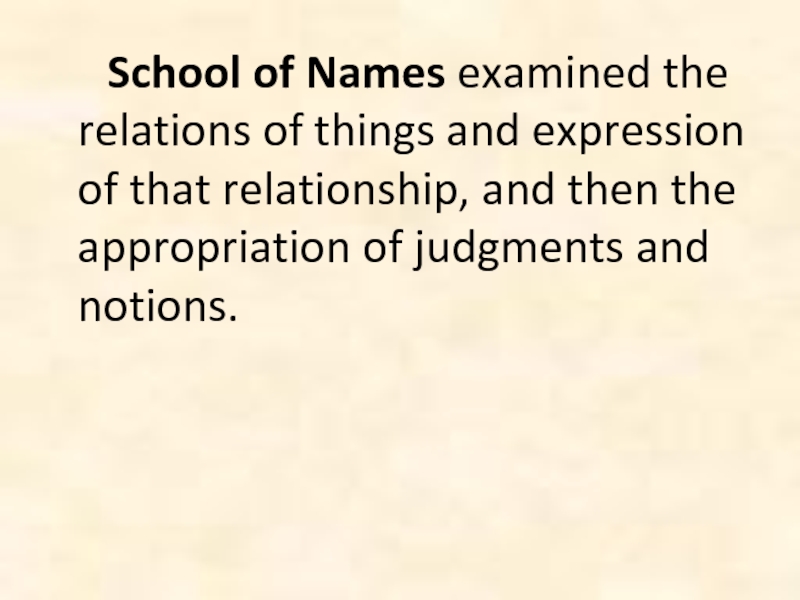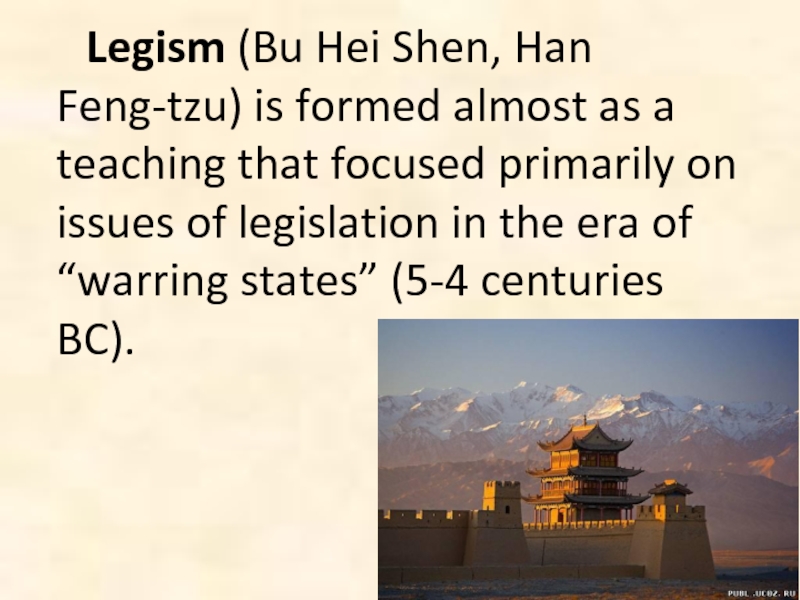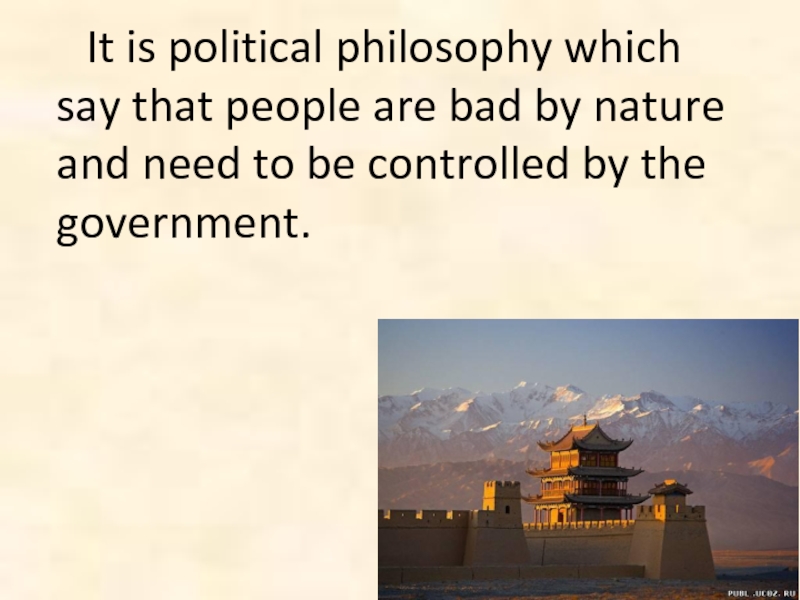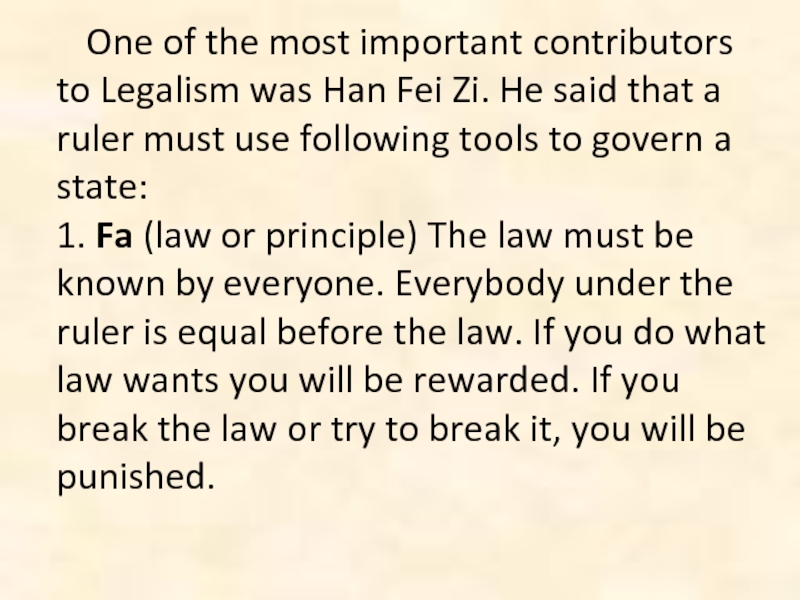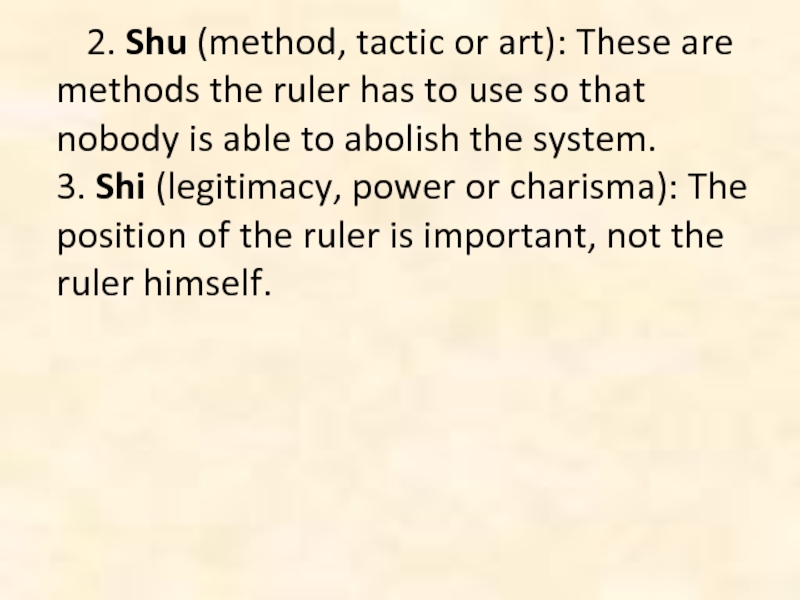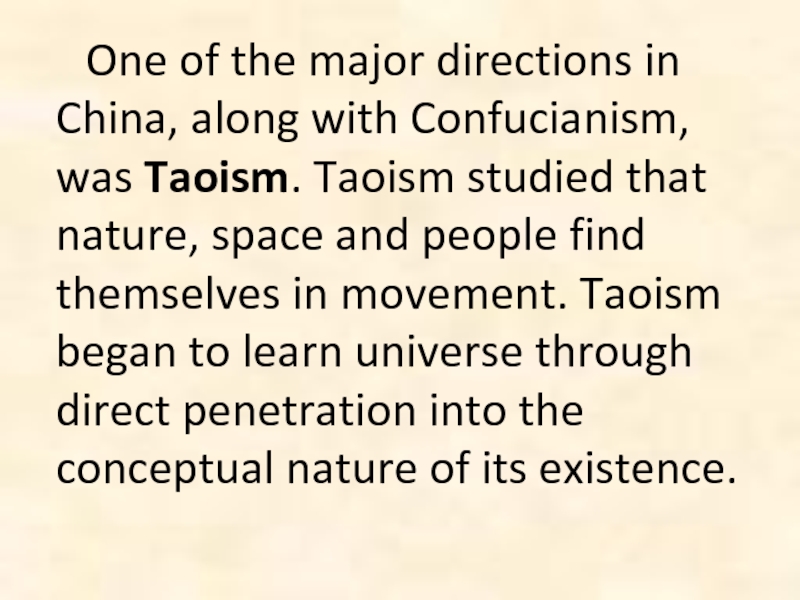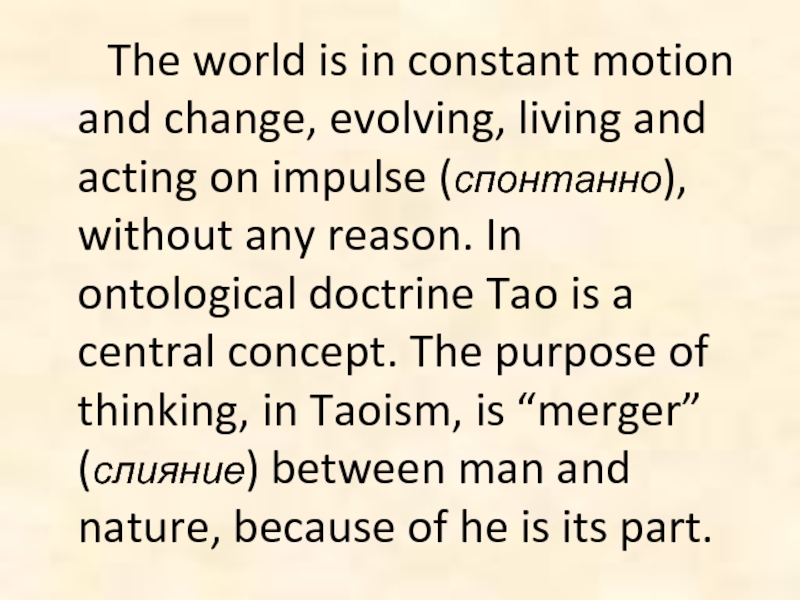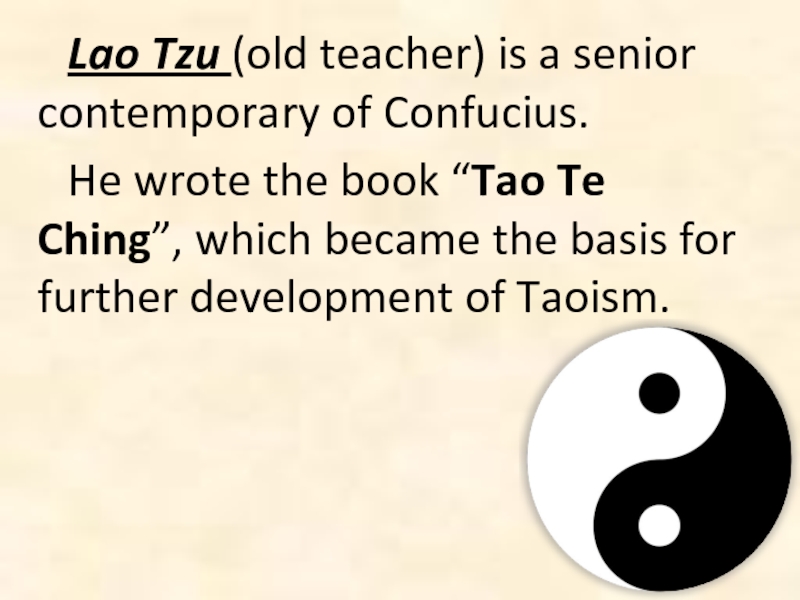- Главная
- Разное
- Дизайн
- Бизнес и предпринимательство
- Аналитика
- Образование
- Развлечения
- Красота и здоровье
- Финансы
- Государство
- Путешествия
- Спорт
- Недвижимость
- Армия
- Графика
- Культурология
- Еда и кулинария
- Лингвистика
- Английский язык
- Астрономия
- Алгебра
- Биология
- География
- Детские презентации
- Информатика
- История
- Литература
- Маркетинг
- Математика
- Медицина
- Менеджмент
- Музыка
- МХК
- Немецкий язык
- ОБЖ
- Обществознание
- Окружающий мир
- Педагогика
- Русский язык
- Технология
- Физика
- Философия
- Химия
- Шаблоны, картинки для презентаций
- Экология
- Экономика
- Юриспруденция
Ancient Indian and Chinese philosophy. (Lecture 2) презентация
Содержание
- 1. Ancient Indian and Chinese philosophy. (Lecture 2)
- 2. In the West, the term Eastern (Oriental)
- 3. One must take into account that this
- 4. Ancient eastern philosophy developed mainly in India
- 5. Ancient Indian philosophy
- 6. Ancient Indian civilization has some special features.
- 7. * Intellectual and religious passivity of people.
- 8. Civilization of ancient India was formed in
- 9. The development of ancient Indian philosophy consists of two periods: the Vedic and Classical.
- 10. Rig-Veda (Sanskrit ऋग्वेद, «Veda hymns») is a
- 11. The word «veda» means «knowledge» and comes
- 12. Rig-Veda contains an extreme pluralism: the gods,
- 13. At the heart of cosmos there is
- 14. The world and its phenomena are considered
- 15. Head corresponds to the caste of Brahmins
- 16. Feet – Vaisya caste (merchants, artisans).
- 17. Universal law, which operates in the past,
- 18. If a person adheres to a strict
- 19. According to a traditional principle of classification,
- 20. These are regarded as orthodox, not because
- 21. To the first group belong the six chief philosophical systems (popularly known as sad-darsana):
- 22. Mimamsa (Prabhakara), the tradition of Vedic exegesis
- 23. Samkhya (Kapila), the school of enumeration or
- 24. Yoga (Patanjali), practice of contemplation, theoretical basis
- 25. Vaisesika (Kanada), the atomistic school, looking for
- 26. During next classical period, there appears an
- 27. Buddhism (Pali बुद्ध धम्म, Buddha Dhamma, “Teaching
- 28. At the core of Buddhism is the
- 29. In Buddhism it’s proposed median (срединный), or
- 30. Eightfold Path Righteous faith. The true
- 31. 5. Saintliness (Праведная жизнь). 6. Righteous
- 32. Jainism preaches non-violence to all living beings
- 33. Lokayata (also Charvaq, Skt. चार्वाक) is a
- 34. Ancient Chinese philosophy
- 35. The main features of ancient Chinese philosophy
- 36. Considering all things as a unity of
- 37. Yin and yang is a Chinese symbol
- 38. Basically, this symbol represents the Positive and
- 39. In Chinese mythology, it is allocated the
- 40. During this period, freely and creatively there were six major philosophical schools.
- 41. 1) School of Confucians; 2) School of
- 42. Confucianism is the philosophy based on the
- 43. Confucianism focuses on the ethical rules, social
- 44. Confucianism was made to stop the fall
- 45. People slowly started to believe in it,
- 46. The teachings of Confucius focus largely on the respect of one’s parents, elders, and ancestors.
- 47. Also, he taught that humans 'can never
- 48. Confucianism can be considered as the oldest school of philosophy in China.
- 49. Ethics of Confucius explaned human in connection
- 50. The social order (Li) Confucius had established
- 51. Another important feature of the social order
- 52. Ren (仁) – humanity, love for people
- 54. Moists school was named after the founder
- 55. The whole meaning was to the ideas
- 56. School of Names examined the relations of
- 57. Legism (Bu Hei Shen, Han Feng-tzu) is
- 58. It is political philosophy which say that
- 59. One of the most important contributors to
- 60. 2. Shu (method, tactic or art): These are methods
- 61. One of the major directions in China,
- 62. The world is in constant motion and
- 63. Lao Tzu (old teacher) is a senior
Слайд 2In the West, the term Eastern (Oriental) philosophy refers very broadly
to the various philosophies of “the East”, namely Asia, including China, India, Japan, Persia and other areas.
Слайд 3One must take into account that this term ignores that these
countries do not belong to a single culture.
Слайд 4Ancient eastern philosophy developed mainly in India and China. The Indian
or Hindu schools of philosophy can be considered the oldest schools of philosophy.
Слайд 6Ancient Indian civilization has some special features.
These are:
* Rigid (жесткий)
caste social structure.
Слайд 7* Intellectual and religious passivity of people.
* The priority of the
irrational over the rational.
Слайд 8Civilization of ancient India was formed in the synthesis of local
cultures and alien people from the North – Aryans
Слайд 9The development of ancient Indian philosophy consists of two periods: the
Vedic and Classical.
Слайд 10Rig-Veda (Sanskrit ऋग्वेद, «Veda hymns») is a collection of religious hymns,
the first known monument of Indian literature.
Слайд 11The word «veda» means «knowledge» and comes from the root «vid-»,
(Sanskrit «know»), that reconstructed from Proto-Indo-European root «weid», meaning «to see» or «to know». «Weid-» is source of English word «wit», as well as the Latin «vision».
Слайд 12Rig-Veda contains an extreme pluralism: the gods, people, animals, plants, elements,
seasons, countries, qualities of body, spiritual abilities, etc. are animate (одушевленные) substances, which are connected with each other and can transform into one another.
Слайд 13At the heart of cosmos there is an eternal substance –
Brahman. It is identical to the eternal inner core (ядро) of the individual Atman.
Слайд 14The world and its phenomena are considered as the improvement of
the primary entity (Purusha). Purusha is also understood to be the first person, which consists of castes.
Слайд 15Head corresponds to the caste of Brahmins (priests).
Hands – to
the caste of the Kshatriyas (the military or ruling class).
Слайд 16Feet – Vaisya caste (merchants, artisans).
Footsteps –Sudras caste (servants).
There
were also untouchables, that is, most lower of the castes.
Слайд 17Universal law, which operates in the past, present and future called
karma.
Samsara is a cycle of repeated rebirth.
Samsara is a cycle of repeated rebirth.
Слайд 18If a person adheres to a strict asceticism, his samsara ceases
(прекращается), and he reaches a state of nirvana, that means fading. Ce’ssation (прекращение) of rebirth is called moksha.
Слайд 19According to a traditional principle of classification, the schools or systems
of Indian philosophy are divided into two broad classes, namely, orthodox (astika) & heterodox (nastika).
Слайд 20These are regarded as orthodox, not because they believe in god,
but because they accept the authority of the Vedas.
Слайд 21To the first group belong the six chief philosophical systems (popularly
known as sad-darsana):
Слайд 22Mimamsa (Prabhakara), the tradition of Vedic exegesis (толкование) of sacrifice (жертвоприношения)
Vedanta
(Badarayana), teaching about the origin of the world from Brahman
Слайд 23Samkhya (Kapila), the school of enumeration or “reasonable deliberation” (разумное взвешивание,
обдумывание): atheistic pluralism – the first substance is not connected with the spirit
Слайд 24Yoga (Patanjali), practice of contemplation, theoretical basis is the Samkhya, but
it acknowledged (признавать) a personal God.
Nyaya (Akshapada Gotama), the school of logic
Nyaya (Akshapada Gotama), the school of logic
Слайд 25Vaisesika (Kanada), the atomistic school, looking for identify the differences among
all that is opposed in the outer and inner worlds. It saw the emancipation of a human soul in the separation of soul from all material.
Слайд 26During next classical period, there appears an interest in ethical issues.
Agnostics, materialists and fatalists oppose the Brahmins and the reformists.
Слайд 27Buddhism (Pali बुद्ध धम्म, Buddha Dhamma, “Teaching of Awakening (Пробужденный)”) is
a religious-philosophical doctrine (dharma) of spiritual awakening (bodhi), which arose about in the VI century B.C. and based on the ideas of Buddha Shakyamuni
Слайд 28At the core of Buddhism is the doctrine of the Four
high-minded (благородный) Truths:
- suffering,
- the origin and causes of suffering,
- a true cessation of suffering,
- the true ways to stop suffering.
- suffering,
- the origin and causes of suffering,
- a true cessation of suffering,
- the true ways to stop suffering.
Слайд 29In Buddhism it’s proposed median (срединный), or the Eightfold Path (Восьмеричный
Путь) of achieving Nirvana. This path is directly related to the cultivation of three varieties of virtues: morality, concentration and wisdom.
Слайд 30Eightfold Path
Righteous faith.
The true determination (решимость).
Righteous speech.
Righteous deeds
(дела).
Слайд 315. Saintliness (Праведная жизнь).
6. Righteous thoughts.
7. Righteous intentions (помыслы).
8. True contemplation.
Слайд 32Jainism preaches non-violence to all living beings in this world. Philosophy
and practice of Jainism is based primarily on the cultivation of soul to attain om’niscience (всеведение), om’nipotence (всесилие) and eternal bliss (блаженство).
Слайд 33Lokayata (also Charvaq, Skt. चार्वाक) is a materialist doctrine of ancient
India.
Lokayata is a belief in the real world (loka) and disbelief in the existence of the underworld.
Lokayata is a belief in the real world (loka) and disbelief in the existence of the underworld.
Слайд 35The main features of ancient Chinese philosophy are:
Practical orientation of
philosophical constructions.
Absence of strict categorical framework.
The domination of the ethical issues.
Absence of strict categorical framework.
The domination of the ethical issues.
Слайд 36Considering all things as a unity of opposites (Yang – Yin),
Chinese thinkers have explained the endless process of moving through their dialectical interaction.
Слайд 37Yin and yang is a Chinese symbol of balance and harmony,
and the opposite forces of nature.
The symbol has two colours, White and Black which symbolize nature's balance of forces such as Good and Evil, Up and Down, Light and Dark, Male and Female, Life and Death, etc.
The symbol has two colours, White and Black which symbolize nature's balance of forces such as Good and Evil, Up and Down, Light and Dark, Male and Female, Life and Death, etc.
Слайд 38Basically, this symbol represents the Positive and Negative forces in the
Universe. This symbol has been used in Asia for a long time, and has become popular in the rest of the world, too.
Слайд 39In Chinese mythology, it is allocated the highest principle, which rules
the world, the existence of things. This principle is sometimes understood as the highest personified ruler (Shang-di), but more often as the word “the heaven” (Tian).
Слайд 411) School of Confucians;
2) School of yin and yang;
3) School of
moism (Mo-jia);
4) School of names (Ming-jia);
5) School of lawyers, legists (Fa jia);
6) School of Taoism (Tao Jia).
4) School of names (Ming-jia);
5) School of lawyers, legists (Fa jia);
6) School of Taoism (Tao Jia).
Слайд 42Confucianism is the philosophy based on the teachings of Confucius, who
was an important Chinese philosopher. Confucianism has a complex system of moral, social, political, and religious thought, and has had a large influence on the history of Chinese civilization.
Слайд 43Confucianism focuses on the ethical rules, social norms and regulation control.
Confucius (551-479 BC), his name is Latinized version of the name Kung Fu Tzu (teacher Kun). He is one of the first Chinese thinkers, philosophers.
Слайд 44Confucianism was made to stop the fall of Chinese society. After
the Zhou Dynasty fell, people cared only for themselves and did not have any respect for others. Confucianism became a social order for China, teaching that social relationships are the most important.
Слайд 45People slowly started to believe in it, because they wanted to
have peace, but they had to care for themselves, too. As a result, Confucianism brought the people love, harmony, and respect for one another.
Слайд 46The teachings of Confucius focus largely on the respect of one’s
parents, elders, and ancestors.
Слайд 47 Also, he taught that humans 'can never stop learning'; meaning that
knowledge is infinite, therefore we will always learn, never stopping. For example, he once asked a seven-year-old child to be his teacher, because the child knew something that he did not.
Слайд 49Ethics of Confucius explaned human in connection with his social functions,
and education is to bring people to the execution (исполнение) of these functions.
Слайд 50The social order (Li) Confucius had established through the ideal of
universality, respect to nature and, especially, relations between people.
This realization of functions and order based on the order leads to the manifestation of humanity (Ren).
This realization of functions and order based on the order leads to the manifestation of humanity (Ren).
Слайд 51Another important feature of the social order is strong obedience (повиновение)
to elders, respect to them.
State is a big family, and family is a small state.
State is a big family, and family is a small state.
Слайд 52Ren (仁) – humanity, love for people (tree)
I (义) – the
truth, justice (metal)
Li (礼) – custom, ceremony, ritual (fire)
Zhi (智) – common sense, wisdom (water)
Xin (信) – sincerity (искренность), good intentions (ground)
Li (礼) – custom, ceremony, ritual (fire)
Zhi (智) – common sense, wisdom (water)
Xin (信) – sincerity (искренность), good intentions (ground)
Слайд 54Moists school was named after the founder Moe Dee (479-391 BC).
The main attention was primarily paid to the problems of social ethics, which is connected through a strict organization with the despotic power of the head.
Слайд 55The whole meaning was to the ideas of universal love (Jiang
ai) and mutual benefit for people.
Слайд 56School of Names examined the relations of things and expression of
that relationship, and then the appropriation of judgments and notions.
Слайд 57Legism (Bu Hei Shen, Han Feng-tzu) is formed almost as a
teaching that focused primarily on issues of legislation in the era of “warring states” (5-4 centuries BC).
Слайд 58It is political philosophy which say that people are bad by
nature and need to be controlled by the government.
Слайд 59One of the most important contributors to Legalism was Han Fei
Zi. He said that a ruler must use following tools to govern a state:
1. Fa (law or principle) The law must be known by everyone. Everybody under the ruler is equal before the law. If you do what law wants you will be rewarded. If you break the law or try to break it, you will be punished.
Слайд 602. Shu (method, tactic or art): These are methods the ruler has to
use so that nobody is able to abolish the system.
3. Shi (legitimacy, power or charisma): The position of the ruler is important, not the ruler himself.
Слайд 61One of the major directions in China, along with Confucianism, was
Taoism. Taoism studied that nature, space and people find themselves in movement. Taoism began to learn universe through direct penetration into the conceptual nature of its existence.
Слайд 62The world is in constant motion and change, evolving, living and
acting on impulse (спонтанно), without any reason. In ontological doctrine Tao is a central concept. The purpose of thinking, in Taoism, is “merger” (слияние) between man and nature, because of he is its part.
Слайд 63Lao Tzu (old teacher) is a senior contemporary of Confucius.
He wrote
the book “Tao Te Ching”, which became the basis for further development of Taoism.
